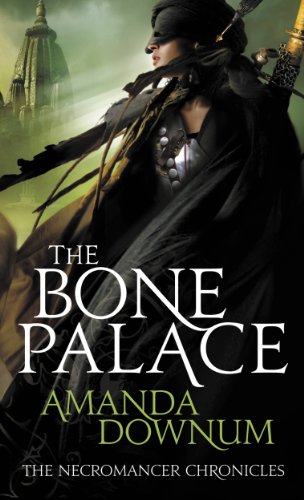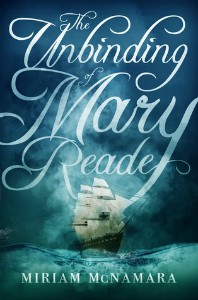The Bone Palace is the kind of story I’ve always wanted, centering around female, queer, and trans characters without making the story about those identities. Beyond that, it has a strong setting that’s distinct from the faux-medieval Europe that so much fantasy uses and a solid suspense/politics plot that forms the core of the book. It’s also the kind of book that you would never know has a relationship between two women from the synopsis, which is part of the reason I’m reviewing it. This is not a romance: the relationship is a beta plot, but it’s as important as any of the other relationships in the story. The novel is also the second in a trilogy, but it’s not necessary to read the first, The Drowning City, to appreciate this one, and I think The Bone Palace is better.
The story is set in a country called Selafai and its capitol city, Erisín. The native Selafaïn are brown-skinned and dark-haired. However, light-skinned immigrants from several surrounding countries, Ashke Ros, Vallorn, and Celanor, also live in the capitol. Erisín’s culture is an amalgam of ancient Rome and India. Downum took the name of the city police, the Vigiles Urbani, from a corps of Roman firefighters and night watchmen, though hers act more like modern police. The connections among ghosts, mirrors, and necromancy are a Greek and Roman tradition. Erisín’s scents are heavy with South Asian spices, particularly the perfumes and the food. Mourners wear white, another Indian tradition. For a de facto third gender in Selafai, she borrows androgyne
, which is derived from Latin and Greek, and a Hindustani word, hijra. (Hijra
is used for a spectrum of assigned-male people who don’t identify as male, though has disparate regional connotations). She uses both words to cover a broad spectrum of trans people: men assigned women at birth, women assigned men at birth, and the androgynes who were neither or both.
Altogether, the setting is distinctive and deep, the sensory experience, culture, and politics of Selafai all well-developed. I do wonder if the borrowing from India is more superficial than that from Rome, but as I know much more about ancient Rome than historical India, that doubt may reflect my ignorance more than anything in the book.
The primary point-of-view characters are Isyllt Iskaldur and Savedra Severos, the first a necromancer and Crown Investigator, the second a daughter of an important aristocratic family and the crown prince’s mistress, a position official enough to carry its own title, pallakis (an ancient Greek word). There are also some shorter sections told from the viewpoint of Kiril Orfion, the king’s necromancer and spymaster and Isyllt’s mentor. Isyllt is the protagonist of the trilogy as a whole, but she shares roughly equal time with her co-protagonist in this book. Isyllt was Kiril’s lover as well as his apprentice, and while both of those relationships are over, she’s clearly not over him. Isyllt is Vallish and orphaned, so for her necromancy and spying were escapes from immigrant poverty and desperation.
Beyond being Nikos’s mistress, Savedra also serves as his unofficial spymaster, protecting him and his wife, Ashlin, from assassins. Savedra is his mistress, not his wife, because she can’t have children with him.
Savedra pried her fingers from the pearls and touched instead the telltale bulge above them. The joke of her birth, that kept the rank of queen forever from her as surely as politics did. If only that were as easy to rip away as a necklace.
Nikos marries Ashlin for politics, because she’s a Celanoran princess, and despite the conflicts possible in their situation, Savedra and Ashlin are also friends.
While Savedra thinks of herself as androgyne or hijra, to me, she’s recognizably trans female. She uses female pronouns and honorifics and self-identifies as female in her own thoughts in her sections. (Also, the third-person narrative doesn’t undercut Savedra’s identity at any point by misgendering her. It’s sad that in 2016, this is still a virtue and not a minimum standard I shouldn’t even need to mention, but here we are.) What I appreciate most is how Savedra’s trans-ness colors her thoughts without dominating them:
She might regret being born a man every time she had a gown fitted, but it meant she was stronger than she looked,A tall woman, with a narrow waist and a bosom that Savedra could only envy,
and:
But the last miscarriage had been harder than the princess would admit, and Savedra had been the one to stroke her hair, to clean away the blood and pretend she never saw the tears. For all the years she’d wished to be born a woman in flesh as well as mind, some things she didn’t envy.
Savedra’s life is filled with these double-edged experiences. She’s not worth assassinating because she can never marry Nikos or have children. Her family’s wealth and privilege protect her from the worst of the discrimination for third-gendered people, as for instance she doesn’t have to work as a prostitute like most hijra, but don’t make her truly the equal of the other noble women.
After the prologue, the plot proper begins with Isyllt getting called to look at a Rosian prostitute found murdered with the dead queen’s ring in her possession. When she returns the ring to the queen’s tomb with Nikos, Isyllt discovers that vampires looted it. Meanwhile, Savedra saves Ashlin from an assassin. While Isyllt tracks down the vampires and the other treasures they stole, Savedra learns about their grave-robbing from Nikos and stumbles onto a family connection with them. Another attempt on Ashlin’s life leads Savedra to take her out of Erisín in disguise to the Severos country estate, where they get attacked by possessed ravens and Ashlin and Savedra realize a mutual attraction.
“I watched you come to harm, and I couldn’t bear it.” She cupped Savedra’s cheek with one calloused hand. “It’s you I want, Vedra.” She took the last step, pressing the length of their bodies together. The princess was hard and lean against her, lips soft and demanding.
“I don’t like girls,” Savedra whispered when she could breathe again. But there was no denying the attraction, not with the sharp beat of her pulse, the heat and hardness of her traitorous flesh. She tried to pull away, but a bedpost trapped her.
Ashlin’s laugh caught in her throat. “Neither do I. But I like you.” She shifted her hips and Savedra gasped. Lips and tongue traced the line of her throat.
This summary doesn’t do justice to the intricacy of the characters or their relationships, though, particularly the secondary characters. Another trans character, Dahlia, lives at the other end of the spectrum of wealth and privilege from Savedra and becomes Isyllt’s assistant, despite the reputation of necromancy, to avoid having to work as a prostitute. All the characters are distinct in their backgrounds, their ethnicities, their genders and sexual orientations, and unlike some fantasy the commoners receive as much as attention as the aristocracy.
As Isyllt searches for the original prostitute’s murderer, it becomes clear to the reader and more gradually to the characters that the vampires, the ravens, and Savedra’s family are part of a larger conspiracy, and as you’d expect, things get worse. The suspense stems less from who the conspirators are or what their objective is and more from why they’re doing it in the first place. Early in the book, Isyllt describes how the events of the previous book, had ended in murder, chaos, and the near-destruction of the city,
and it’s a fair summary of The Bone Palace too, though it’s far from a tragedy.
Spoilers for the ending
I liked two things about the ending and disliked one other. The parallels and contrasts between Mathiros, Lychandra, Phaedra, and Kiril on one hand and Nikos, Ashlin, Savedra, and Isyllt on the other are neatly done. Nikos sees how his father’s decisions left him, alone and miserable
, and chooses better. One of the strongest passages of the book is when he promises to accept Savedra’s and Ashlin’s child as his own. Phaedra’s offer to Savedra to transfer her soul to Ginevra’s body is also well-chosen: there are not many temptations that would be more difficult for a trans woman to refuse. That said, Phaedra’s defeat seems anticlimactic because there’s no reason that Isylt couldn’t have allowed Forsythia to possess her at any point, so why did she wait until Mathiros and Kiril were dead and Ginevra had killed herself?
This last weakness in the ending is related to the story’s magic being ill-defined and too powerful, but except for that one part of the ending, it doesn’t interfere with the plot. Aside from the other problems I’ve mentioned, Downum’s prose tends to the flowery and in some places distracts from the plot and characters rather than enhancing them. There are also a few loose threads. For instance, Spider’s sort-of relationship with Isyllt isn’t well-motivated except for her general self-destructive tendencies, and while Downum talks about those, I don’t feel like I ever understand them. However, these are minor problems on the whole.
I recommend The Bone Palace to anyone who likes fantasy and doesn’t mind dark elements, particularly anyone who also likes queer women in their fantasy.


